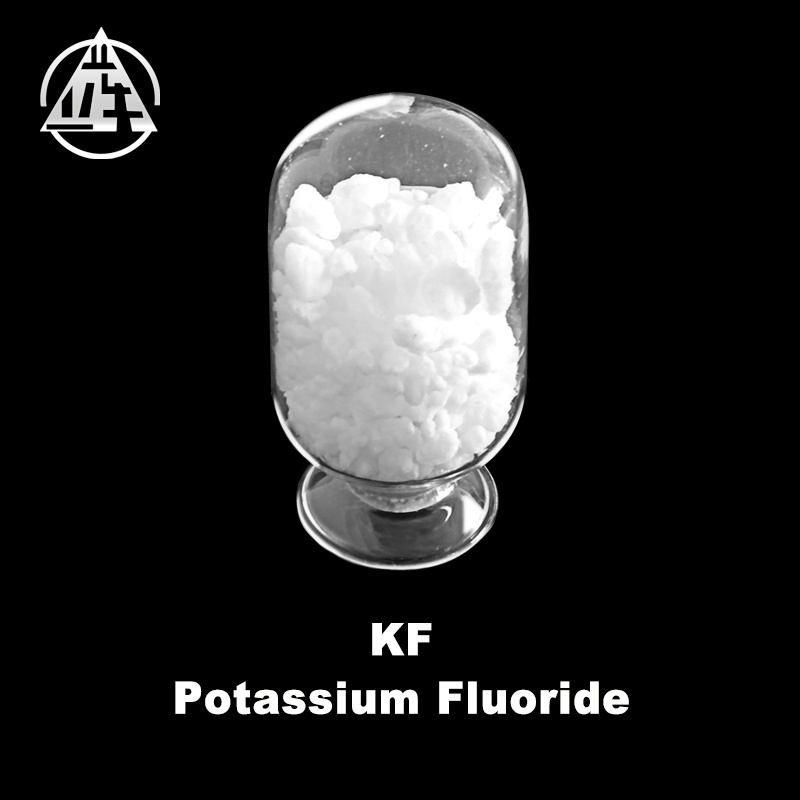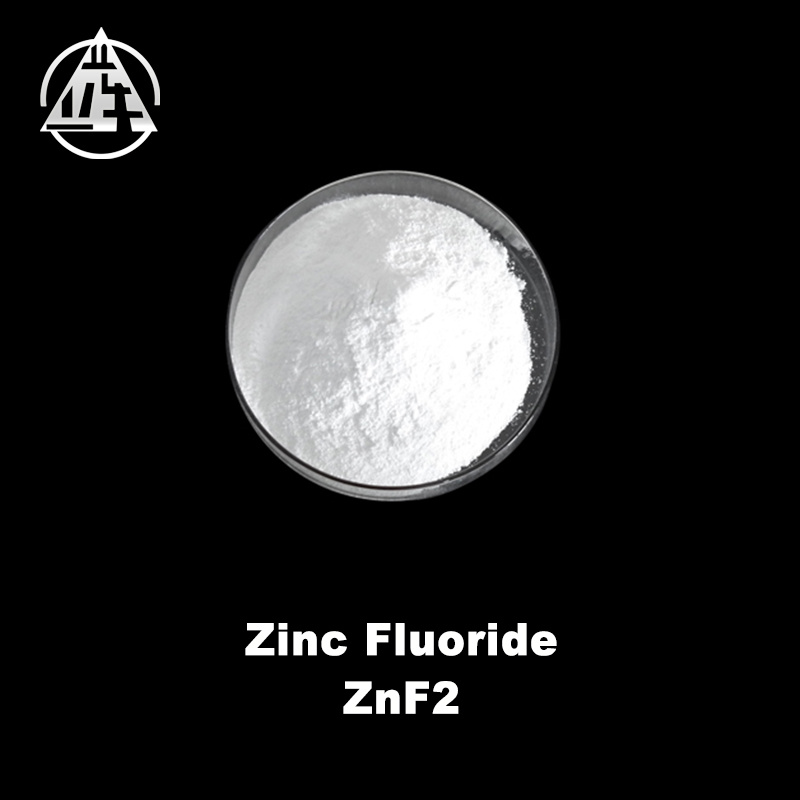The Future of Indium Fluoride in Magnetic Resonance Imaging: Advancements, Benefits, and Potential Applications
Release Time:
2023-08-05
Table of Contents: 1. Introduction: Unveiling the Potential of Indium Fluoride in MRI 2. The Science Behind Indium Fluoride 3. Advancements in Indium Fluoride MRI Contrast Agents 4. Benefits of Indium Fluoride in MRI 5. The Role of Indium Fluoride in Early Disease Detection 6. Potential Applications of Indium Fluoride in MRI Technology 7. FAQs: Answering Your Questions on Indium Fluoride in MRI 8.
Table of Contents:
1. Introduction: Unveiling the Potential of Indium Fluoride in MRI
2. The Science Behind Indium Fluoride
3. Advancements in Indium Fluoride MRI Contrast Agents
4. Benefits of Indium Fluoride in MRI
5. The Role of Indium Fluoride in Early Disease Detection
6. Potential Applications of Indium Fluoride in MRI Technology
7. FAQs: Answering Your Questions on Indium Fluoride in MRI
8. Conclusion
The field of medical imaging has witnessed remarkable advancements since the advent of Magnetic Resonance Imaging (MRI) technology. MRI has become an indispensable tool for diagnosing various medical conditions, ranging from neurological disorders to cardiovascular diseases. Over the years, researchers and scientists have strived to enhance the accuracy and effectiveness of MRI, leading to the discovery of Indium Fluoride as a promising contrast agent.
Contrast agents play a vital role in MRI by improving the visibility and contrast of tissues and organs. They help radiologists and clinicians obtain clearer images, enabling them to identify and diagnose abnormalities more accurately. Indium Fluoride has emerged as a potential alternative to traditional contrast agents, offering numerous advantages that make it a promising candidate for future MRI applications.
Indium Fluoride, with the chemical formula InF3, is a compound composed of indium and fluorine atoms. Its unique properties make it suitable for various applications, including its use as a contrast agent in MRI. The compound exhibits excellent stability, biocompatibility, and magnetic resonance properties that enhance its performance in medical imaging.
One of the key advantages of Indium Fluoride in MRI is its ability to enhance signal intensity. When introduced into the body, Indium Fluoride interacts with the surrounding tissues, increasing the contrast between healthy and abnormal tissues. This enhanced signal intensity enables radiologists to detect and characterize anomalies with greater precision.
Recent advancements in Indium Fluoride MRI contrast agents focus on developing targeted delivery systems. Researchers are exploring methods to encapsulate Indium Fluoride within nanoparticles or micelles, allowing for specific targeting to diseased tissues or organs. This targeted approach improves the efficiency and accuracy of imaging, reducing the need for higher contrast agent doses.
Scientists are continuously striving to enhance the stability and longevity of Indium Fluoride contrast agents. By modifying the surface properties of these agents, they can reduce the risk of degradation and ensure prolonged circulation within the body. This innovation contributes to the overall efficacy and safety of Indium Fluoride in MRI.
Indium Fluoride demonstrates superior image quality compared to traditional contrast agents. Its unique magnetic resonance properties enable clearer visualization of anatomical structures, offering radiologists and clinicians a more comprehensive view for accurate diagnosis.
Indium Fluoride exhibits excellent biocompatibility, minimizing the risk of adverse reactions or side effects. This characteristic is particularly beneficial for patients with underlying health conditions, ensuring the safety and well-being of individuals undergoing MRI examinations.
The ability to detect diseases at an early stage significantly improves patient outcomes. Indium Fluoride's enhanced signal intensity and superior image quality enable the early detection of various medical conditions, including cancer, cardiovascular diseases, and neurological disorders. Early identification allows for prompt intervention and potentially life-saving treatment.
Indium Fluoride aids in the precise characterization of lesions, providing clinicians with essential information for effective treatment planning. By accurately distinguishing between benign and malignant lesions, Indium Fluoride helps optimize patient care and outcomes.
Indium Fluoride holds promise in the field of neurological imaging and research. Its high signal intensity and excellent biocompatibility make it suitable for studying brain functions, identifying abnormalities, and advancing our understanding of various neurological disorders.
Indium Fluoride's ability to enhance signal intensity allows for improved visualization of cardiovascular tissues and blood vessels. This capability enables more accurate diagnosis and monitoring of cardiovascular diseases, contributing to early interventions and better patient outcomes.
A1: Yes, Indium Fluoride exhibits excellent biocompatibility and has been extensively studied for its safety in MRI applications. It is considered safe for patients, with minimal risk of adverse reactions or side effects.
A2: Indium Fluoride offers superior image quality, enhanced signal intensity, and improved stability compared to traditional contrast agents. These advantages contribute to more accurate diagnoses and better patient care.
A3: The use of Indium Fluoride in pediatric patients requires further research and validation. However, initial studies suggest its potential for safe and effective use in children undergoing MRI examinations.
A4: While Indium Fluoride shows great promise, further research is needed to optimize its performance and address any limitations. Ongoing studies aim to enhance its stability, targeted delivery, and applicability in various medical conditions.
A5: The development and implementation of Indium Fluoride in clinical practice depend on further research, regulatory approvals, and commercialization. While progress is being made, it may take some time before it becomes widely available.
Indium Fluoride holds immense potential in revolutionizing the field of Magnetic Resonance Imaging (MRI). Its unique properties, including enhanced image quality, reduced side effects, and the ability to aid in early disease detection, make it a promising candidate for future MRI applications. Ongoing advancements and research will continue to unlock the full potential of Indium Fluoride, ultimately leading to improved diagnostic capabilities, optimized treatment planning, and better patient outcomes in the realm of medical imaging.
1. Introduction: Unveiling the Potential of Indium Fluoride in MRI
2. The Science Behind Indium Fluoride
3. Advancements in Indium Fluoride MRI Contrast Agents
4. Benefits of Indium Fluoride in MRI
5. The Role of Indium Fluoride in Early Disease Detection
6. Potential Applications of Indium Fluoride in MRI Technology
7. FAQs: Answering Your Questions on Indium Fluoride in MRI
8. Conclusion
1. Introduction: Unveiling the Potential of Indium Fluoride in MRI
The Evolution of MRI Technology
The field of medical imaging has witnessed remarkable advancements since the advent of Magnetic Resonance Imaging (MRI) technology. MRI has become an indispensable tool for diagnosing various medical conditions, ranging from neurological disorders to cardiovascular diseases. Over the years, researchers and scientists have strived to enhance the accuracy and effectiveness of MRI, leading to the discovery of Indium Fluoride as a promising contrast agent.
The Significance of Contrast Agents in MRI
Contrast agents play a vital role in MRI by improving the visibility and contrast of tissues and organs. They help radiologists and clinicians obtain clearer images, enabling them to identify and diagnose abnormalities more accurately. Indium Fluoride has emerged as a potential alternative to traditional contrast agents, offering numerous advantages that make it a promising candidate for future MRI applications.
2. The Science Behind Indium Fluoride
Understanding the Chemical Composition
Indium Fluoride, with the chemical formula InF3, is a compound composed of indium and fluorine atoms. Its unique properties make it suitable for various applications, including its use as a contrast agent in MRI. The compound exhibits excellent stability, biocompatibility, and magnetic resonance properties that enhance its performance in medical imaging.
Enhancing Signal Intensity
One of the key advantages of Indium Fluoride in MRI is its ability to enhance signal intensity. When introduced into the body, Indium Fluoride interacts with the surrounding tissues, increasing the contrast between healthy and abnormal tissues. This enhanced signal intensity enables radiologists to detect and characterize anomalies with greater precision.
3. Advancements in Indium Fluoride MRI Contrast Agents
Targeted Delivery Systems
Recent advancements in Indium Fluoride MRI contrast agents focus on developing targeted delivery systems. Researchers are exploring methods to encapsulate Indium Fluoride within nanoparticles or micelles, allowing for specific targeting to diseased tissues or organs. This targeted approach improves the efficiency and accuracy of imaging, reducing the need for higher contrast agent doses.
Improved Stability and Longevity
Scientists are continuously striving to enhance the stability and longevity of Indium Fluoride contrast agents. By modifying the surface properties of these agents, they can reduce the risk of degradation and ensure prolonged circulation within the body. This innovation contributes to the overall efficacy and safety of Indium Fluoride in MRI.
4. Benefits of Indium Fluoride in MRI
Enhanced Image Quality
Indium Fluoride demonstrates superior image quality compared to traditional contrast agents. Its unique magnetic resonance properties enable clearer visualization of anatomical structures, offering radiologists and clinicians a more comprehensive view for accurate diagnosis.
Reduced Side Effects
Indium Fluoride exhibits excellent biocompatibility, minimizing the risk of adverse reactions or side effects. This characteristic is particularly beneficial for patients with underlying health conditions, ensuring the safety and well-being of individuals undergoing MRI examinations.
5. The Role of Indium Fluoride in Early Disease Detection
Early Detection: A Lifesaving Advantage
The ability to detect diseases at an early stage significantly improves patient outcomes. Indium Fluoride's enhanced signal intensity and superior image quality enable the early detection of various medical conditions, including cancer, cardiovascular diseases, and neurological disorders. Early identification allows for prompt intervention and potentially life-saving treatment.
Precision in Lesion Characterization
Indium Fluoride aids in the precise characterization of lesions, providing clinicians with essential information for effective treatment planning. By accurately distinguishing between benign and malignant lesions, Indium Fluoride helps optimize patient care and outcomes.
6. Potential Applications of Indium Fluoride in MRI Technology
Neurological Imaging and Research
Indium Fluoride holds promise in the field of neurological imaging and research. Its high signal intensity and excellent biocompatibility make it suitable for studying brain functions, identifying abnormalities, and advancing our understanding of various neurological disorders.
Cardiovascular Imaging
Indium Fluoride's ability to enhance signal intensity allows for improved visualization of cardiovascular tissues and blood vessels. This capability enables more accurate diagnosis and monitoring of cardiovascular diseases, contributing to early interventions and better patient outcomes.
7. FAQs: Answering Your Questions on Indium Fluoride in MRI
Q1: Is Indium Fluoride safe for patients undergoing MRI?
A1: Yes, Indium Fluoride exhibits excellent biocompatibility and has been extensively studied for its safety in MRI applications. It is considered safe for patients, with minimal risk of adverse reactions or side effects.
Q2: How does Indium Fluoride compare to traditional contrast agents?
A2: Indium Fluoride offers superior image quality, enhanced signal intensity, and improved stability compared to traditional contrast agents. These advantages contribute to more accurate diagnoses and better patient care.
Q3: Can Indium Fluoride be used for pediatric patients?
A3: The use of Indium Fluoride in pediatric patients requires further research and validation. However, initial studies suggest its potential for safe and effective use in children undergoing MRI examinations.
Q4: Are there any limitations to the use of Indium Fluoride in MRI?
A4: While Indium Fluoride shows great promise, further research is needed to optimize its performance and address any limitations. Ongoing studies aim to enhance its stability, targeted delivery, and applicability in various medical conditions.
Q5: When can we expect to see Indium Fluoride in clinical practice?
A5: The development and implementation of Indium Fluoride in clinical practice depend on further research, regulatory approvals, and commercialization. While progress is being made, it may take some time before it becomes widely available.
8. Conclusion
Indium Fluoride holds immense potential in revolutionizing the field of Magnetic Resonance Imaging (MRI). Its unique properties, including enhanced image quality, reduced side effects, and the ability to aid in early disease detection, make it a promising candidate for future MRI applications. Ongoing advancements and research will continue to unlock the full potential of Indium Fluoride, ultimately leading to improved diagnostic capabilities, optimized treatment planning, and better patient outcomes in the realm of medical imaging.



